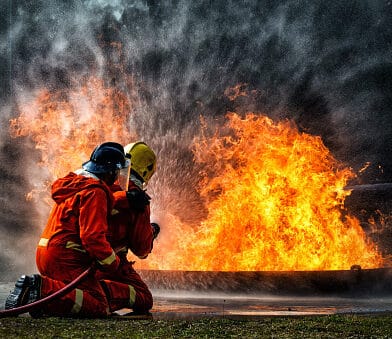
Gas Detection in The Fire Service: Essential Tools
Introduction of the industry
The fire service, also known as the fire and rescue service (FRS) in some regions, is a vital organisation dedicated to public safety. Their role goes beyond just extinguishing fires, though that remains a core function. Here’s a breakdown of what the fire service does and its different sections:
Main Responsibilities:
- Firefighting: Responding to and extinguishing fires of all sizes, from kitchen mishaps to large industrial blazes.
- Rescue: Extricating people from vehicles after accidents, rescuing people from high places or collapsed buildings, and other emergency situations.
- Prevention: Educating the public about fire safety, conducting fire inspections of buildings, and promoting the use of smoke detectors and fire extinguishers.
- Response to other emergencies: The fire service can also be called upon to respond to other emergencies, such as flooding, hazardous materials spills, and road traffic collisions.
Fire Service Sections (These may vary slightly by location):
- Firefighters: The frontline heroes who tackle fires, perform rescues, and carry out preventative measures.
- Fire Engine Crews: Composed of firefighters, these teams operate fire engines and other firefighting equipment at emergency scenes.
- Fire Prevention Officers: Educate the public on fire safety, conduct inspections, and enforce fire safety regulations.
- Technical Rescue Teams: Specialists trained for complex rescues involving confined spaces, water, or rope work.
- Command Officers: Provide leadership and make crucial decisions during emergency situations. Additionally:
- Control Room Staff: These unsung heroes answer emergency calls, dispatch firefighters, and provide vital communication links.
- Support Staff: From mechanics who maintain fire vehicles to administrative personnel, many roles contribute to the smooth operation of the fire service.
The fire service plays a critical role in keeping communities safe. By understanding their diverse responsibilities and specialised sections, you can appreciate the full scope of their work.

The need for gas detection
Firefighters face more than just flames during emergencies. Gas detection is crucial in the fire service for several reasons:
- Safety: Fires can produce a variety of toxic gases like carbon monoxide (CO) and hydrogen cyanide (HCN). Early detection by gas detectors allows firefighters to take precautions like wearing breathing apparatus or evacuating the area, preventing serious illness or death.
- Improved Decision-Making: Knowing what gases are present helps fire commanders make informed decisions about firefighting tactics and resource allocation. For example, some gases require different extinguishing methods or pose explosion risks.
- Hidden Dangers: Modern buildings often contain synthetic materials that burn differently than traditional materials, releasing hazardous gases firefighters might not readily detect with sight or smell alone.
- Hazmat Situations: The fire service often responds to hazardous materials (hazmat) incidents like chemical spills or gas leaks. Gas detectors are essential for identifying the specific threat and taking appropriate action to protect firefighters and the public.
- Confined Space Rescue: Firefighters entering confined spaces like collapsed buildings or tanks need to ensure there’s enough oxygen and no dangerous gases before entry. Gas detectors are vital for their safety in such situations.
In essence, gas detection equips firefighters to better understand the environment they’re entering, protecting themselves and allowing them to make informed decisions that save lives.
Download our industry guide today for more information and recommended products!





